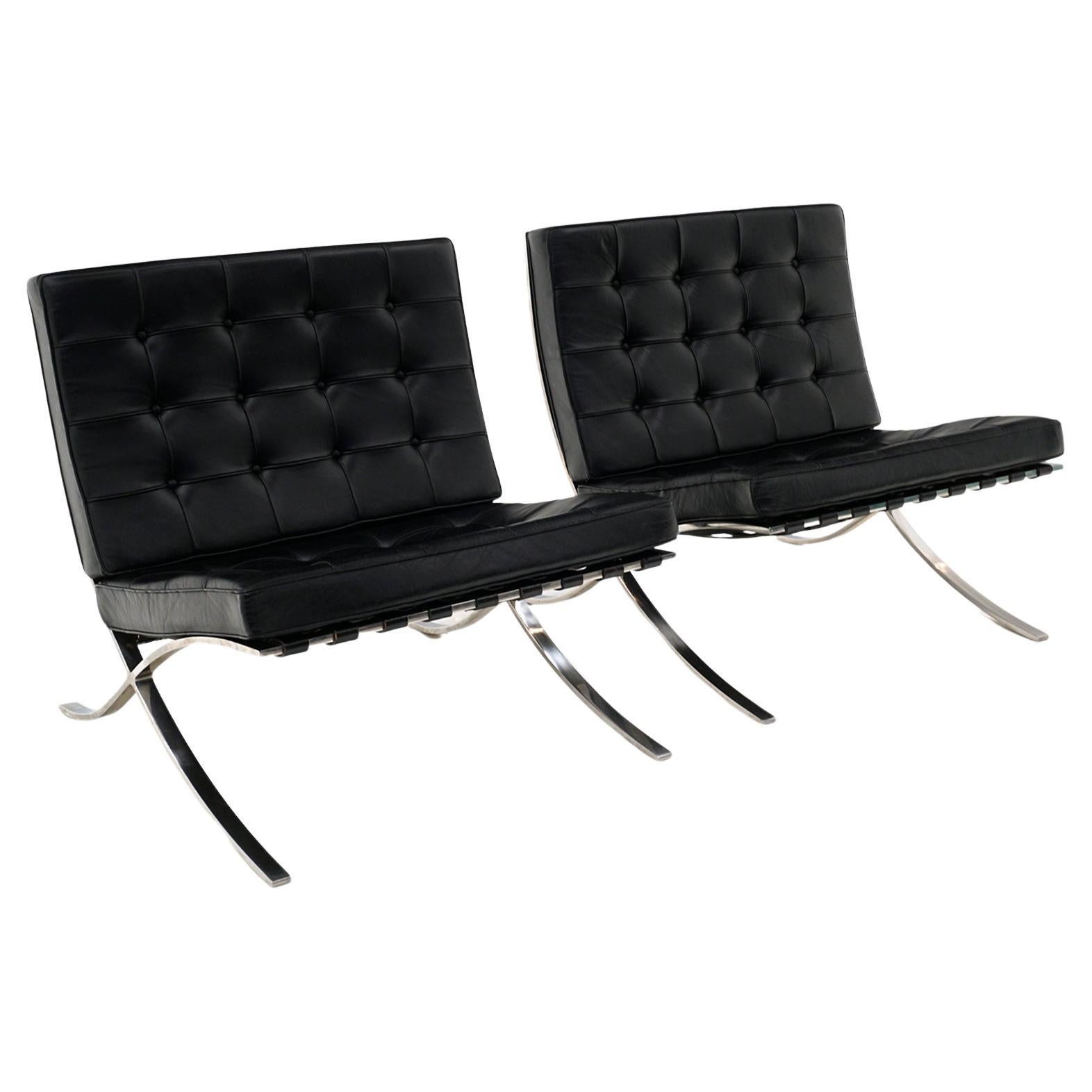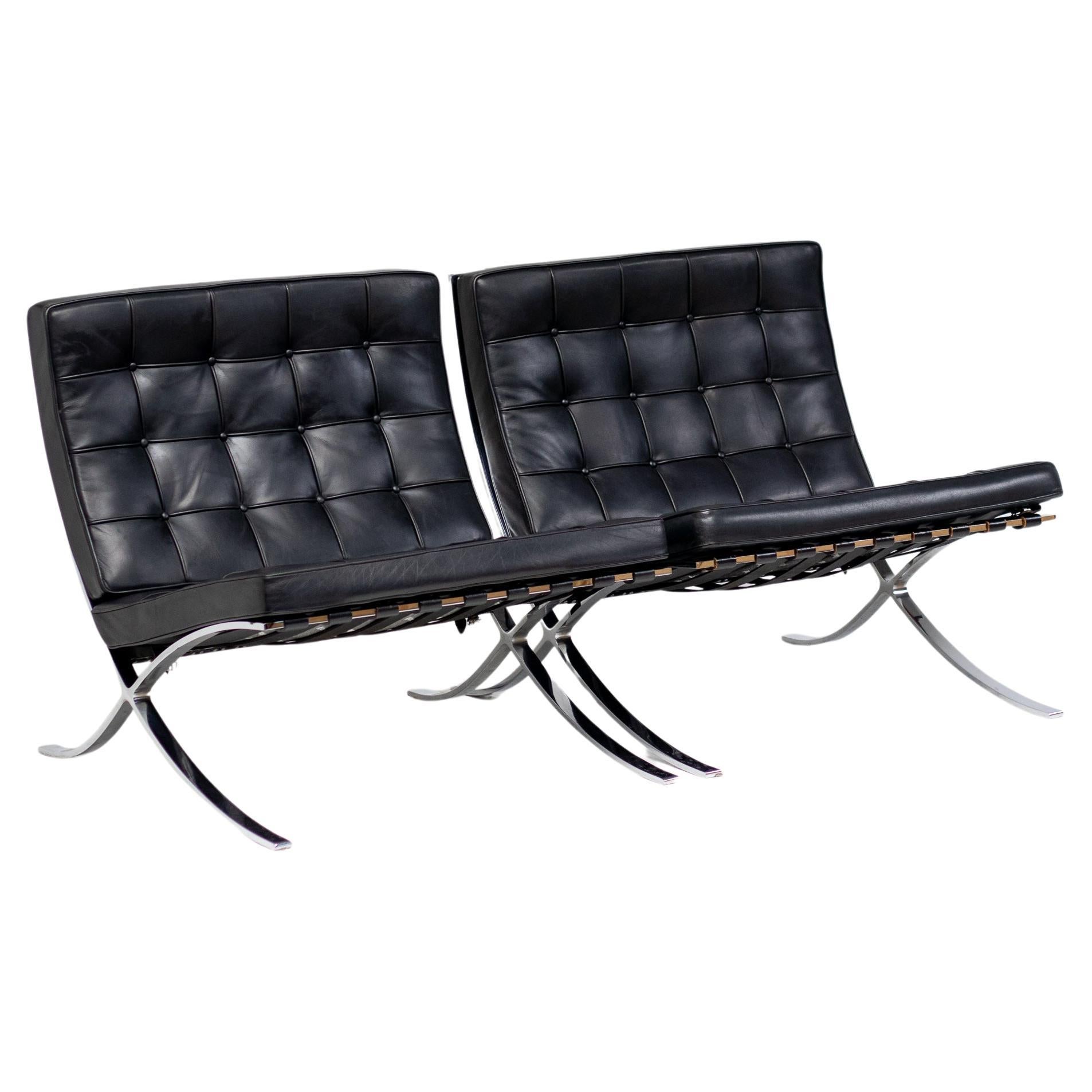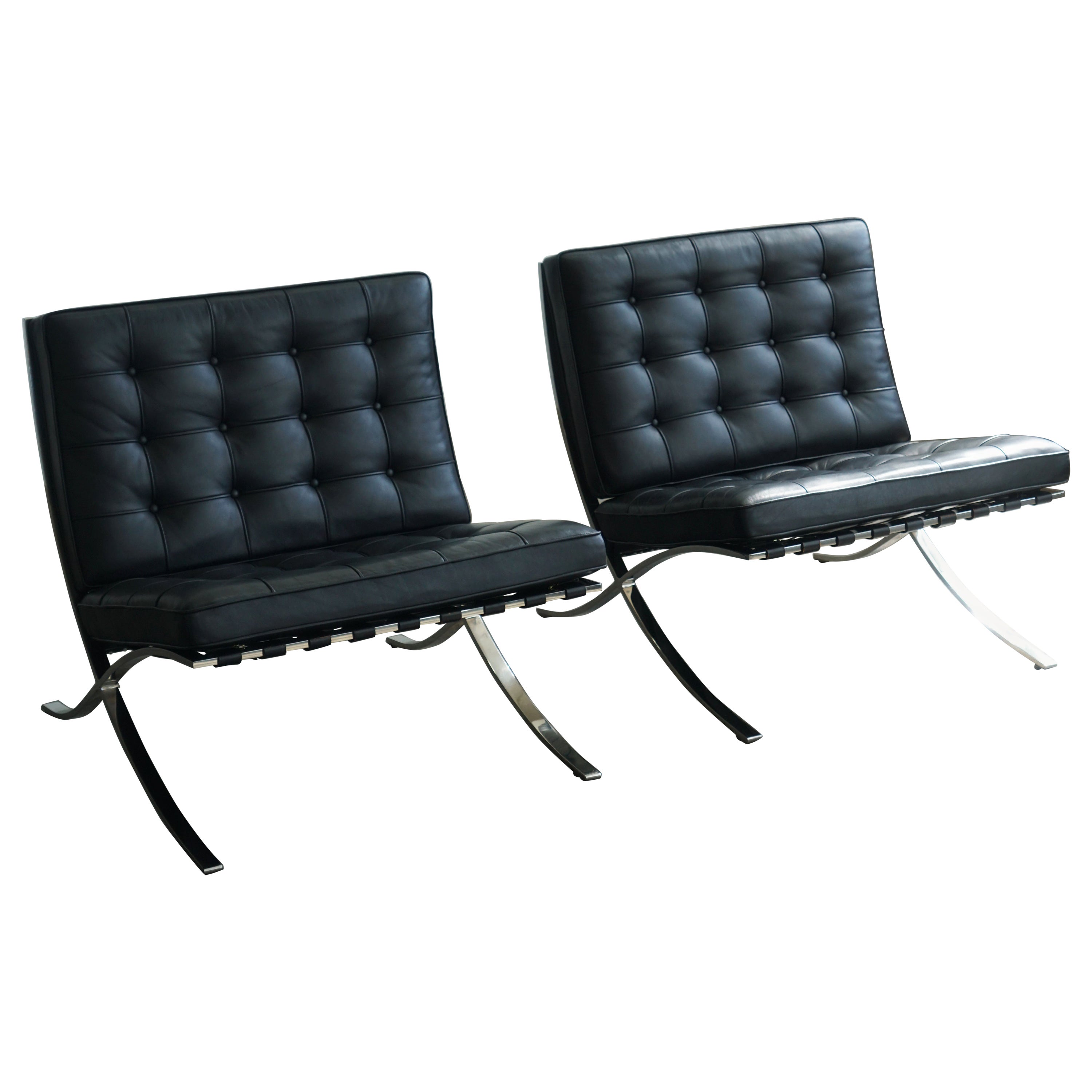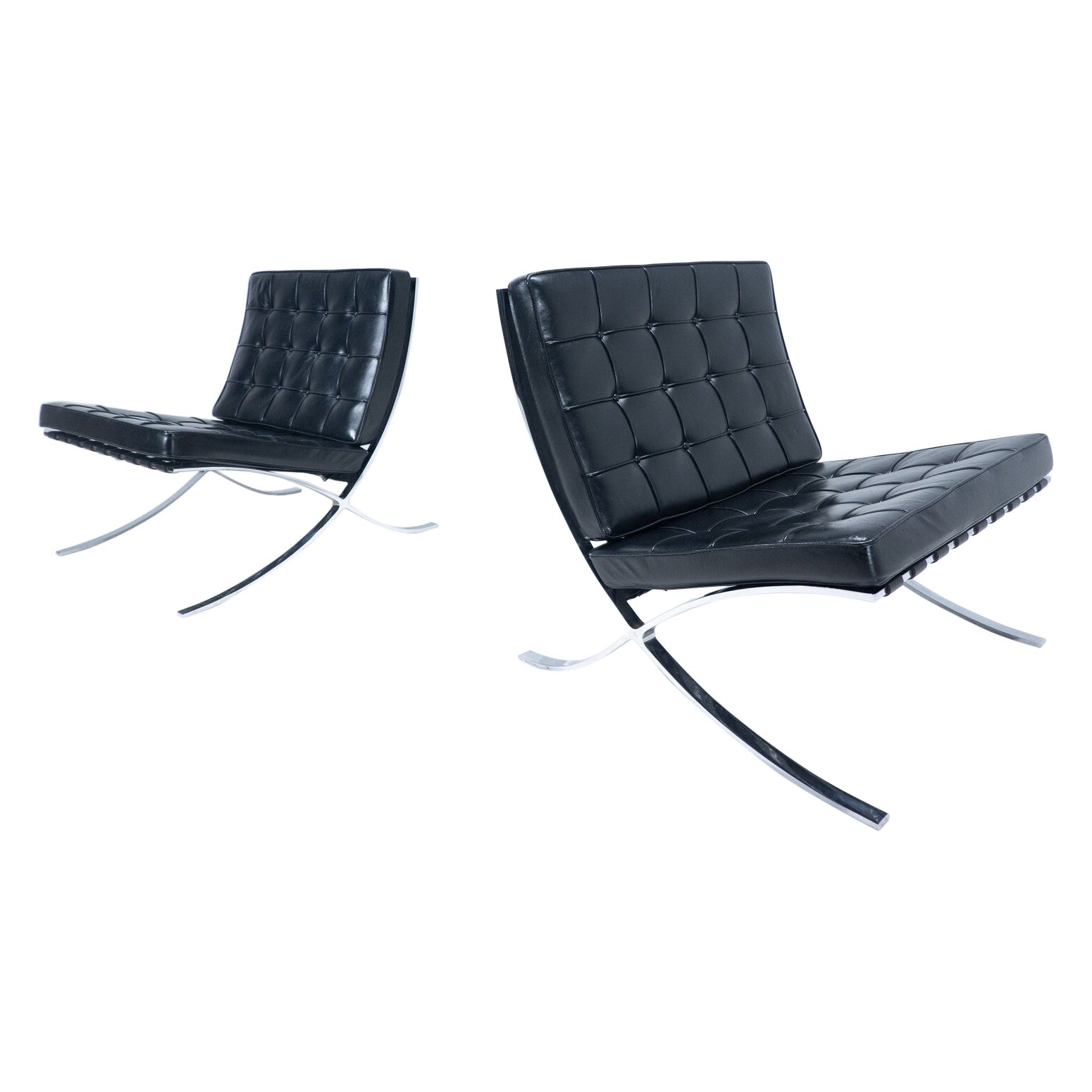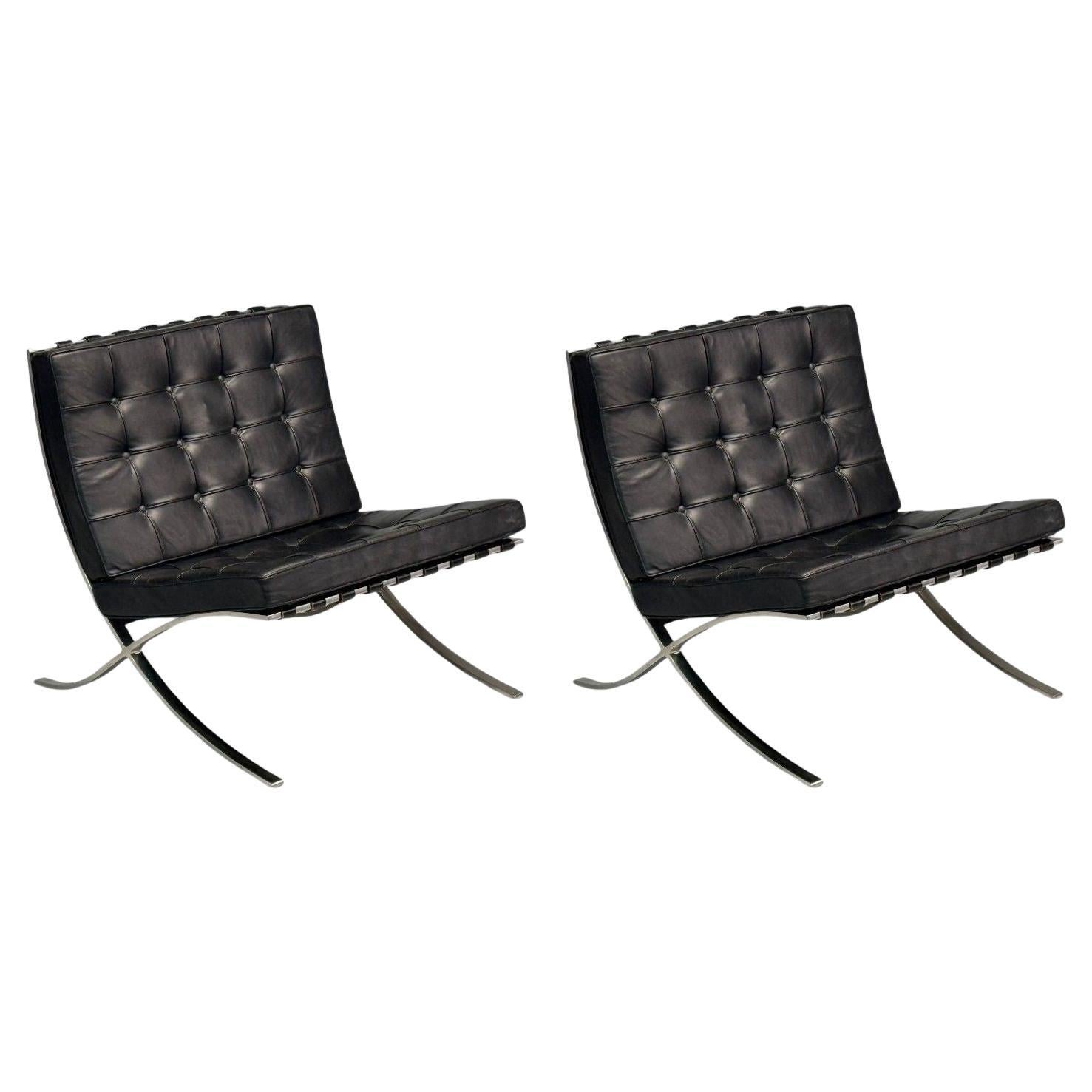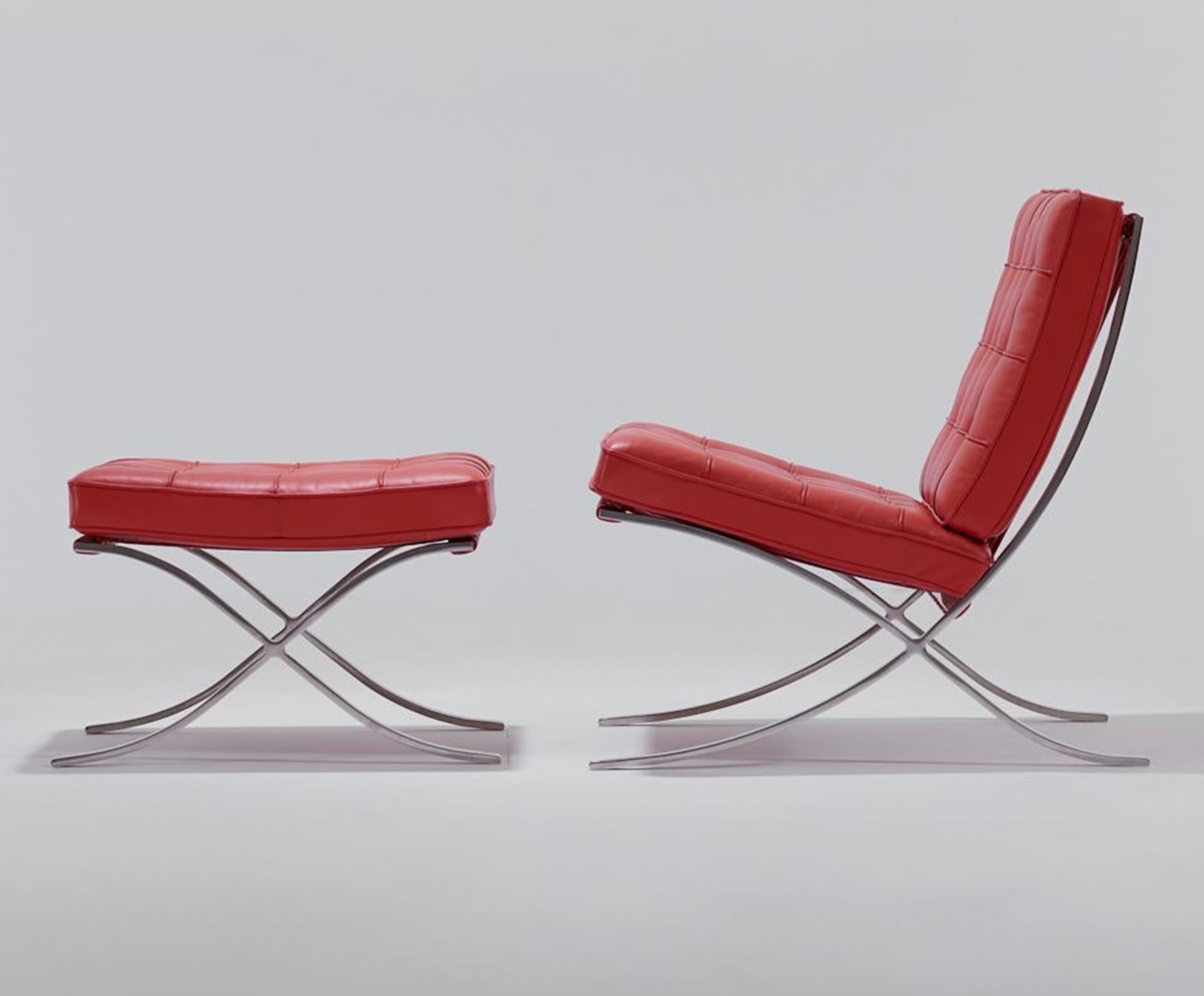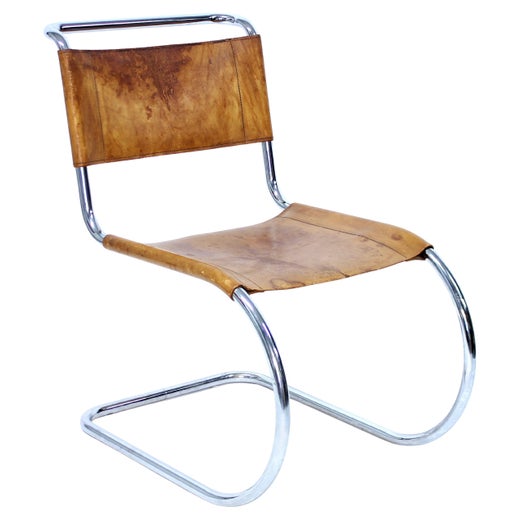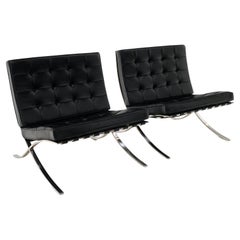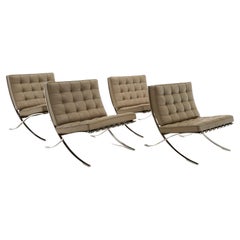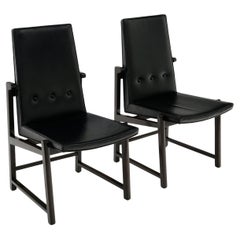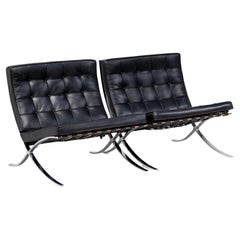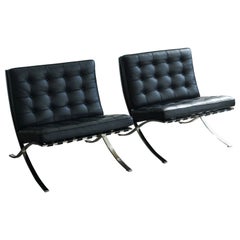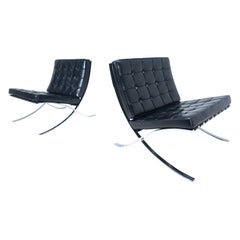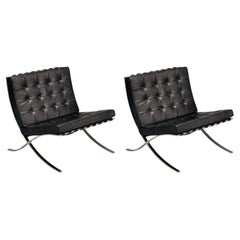Pair of Knoll Black Leather & Stainless Steel Barcelona Chairs, Signed
About the Item
- Creator:Knoll (Manufacturer),Ludwig Mies van der Rohe (Designer)
- Design:
- Dimensions:Height: 31 in (78.74 cm)Width: 30 in (76.2 cm)Depth: 30 in (76.2 cm)Seat Height: 17.5 in (44.45 cm)
- Sold As:Set of 2
- Style:Bauhaus (Of the Period)
- Materials and Techniques:
- Place of Origin:
- Period:
- Date of Manufacture:2000s
- Condition:Very few signs of use. Light scratches to the tops of the stainless steel legs which is normal with these.
- Seller Location:Kansas City, MO
- Reference Number:1stDibs: LU1057034568652
Barcelona Chair
For the German Pavilion at the 1929 International Exposition in Barcelona, German-American architect and furniture maker Ludwig Mies van der Rohe (1886–1969) — in collaboration with his romantic partner, designer Lilly Reich (1885–1947) — created a chair fit for royalty.
The Spanish king, Alfonso XIII, was expected to attend the opening of the World’s Fair, and as Mies later stated, the chair needed to be “monumental . . . you just couldn’t use a kitchen chair.” In its X-shaped structure, the Barcelona chair recalls the ancient folding stools of Egypt and Rome and was designed with swooping lines and a luxe contrast of materials between the chrome-plated frame and quilted leather cushions. Like the pavilion surrounding it, the chair distilled Mies’s “less is more” aphorism.
By all accounts, King Alfonso XIII never got around to sitting on this modern throne. The pavilion, too, stood for only seven months before it was demolished. Nevertheless, the Barcelona chair was regarded as a masterwork of modernism, influencing countless buildings that followed with its minimalist aesthetic of marble, glass and steel, which gracefully flowed together from the exterior to the interior spaces. Out of all the pavilion’s components, the Barcelona chair had the most longevity as a stand-alone piece.
Shortly after the close of the pavilion, the Barcelona chair went into production, first handcrafted by the Berliner Metallgewerbe studio. It became popular in private residences, debuting in America in 1930 in the New York apartment of architect Philip Johnson, who had met Mies during his work on the German Pavilion in Spain.
Fleeing the Nazis’ rise to power in Germany, Mies, too, soon moved to the United States. He relocated to Chicago, where he became the director of the Illinois Institute of Technology in 1938. It was there that he met designer Florence Knoll, who would help bring the Barcelona chair into mass production.
The earliest models of the Barcelona chair from Knoll were released in 1947. The design company and furniture manufacturer made slight updates to the chair over the years in response to new technology, including in 1964 changing the frame to stainless steel. Prevalent in office lobbies and architects’ homes, the Barcelona chair has seen numerous imitators, so in 2004 Knoll finally received a federal trade dress protection for it and four other pieces by Mies.
Knoll continues to produce the chair, and although the 21st-century version differs slightly from the 1929 original, it still embodies Mies and Reich's vision of design elegance in its balance of function and form.
Ludwig Mies van der Rohe
Architect, furniture designer and educator, Ludwig Mies van der Rohe was a central figure in the advancement and promotion of modernist design and architectural theory and practice. Like Frank Lloyd Wright and Le Corbusier, he was a hugely influential presence in the field, who shaped the course of 20th-century architecture both through his buildings and his teaching of rationalist design principles.
Born in the medieval German city of Aachen, Mies found an interest in architecture as a boy while working for his father, a master stonemason. He had no formal education as an architect, but learned his skills as an apprentice to the designer Bruno Paul, and as a staffer in the office the proto-modernist architect and designer Peter Behrens. Following World War I, Mies rose to prominence in his field amid the liberal atmosphere of the Weimar Republic. His reputation was secured by his work on the German Pavilion at the 1929 International Exposition in Barcelona (commonly referred to as the Barcelona Pavilion) — which Mies codesigned with Lilly Reich, his creative and romantic partner — a radically simple, poetic, open-plan building pared down to its architectural essentials. Mies would go on to direct the Bauhaus from 1930 until 1933, when Nazi-government interference forced the closure of the progressive art and design school. Later that decade, he made his way to Chicago, where he remained for the rest of his career as a practicing architect and a dean of the Illinois Institute of Technology.
Mies’s famed dictum “less is more” grew from his belief that architecture both guides and expresses the spirit of the times, and he envisioned the 20th century as open-minded, logical, transparent and liberated by technology. His best-known buildings — residences such as the Villa Tugendhat in Czechoslovakia and the Farnsworth House in rural Illinois; skyscrapers like the 860–880 Lake Shore Drive apartment towers in Chicago and the Seagram Building in New York — reflect that philosophy. As do the most famous furniture designs authored by him or codesigned with Reich.
Pieces designed by Mies and Reich such as the Barcelona chair (the authorized version is produced by Knoll today), stools and daybed, or the cantilevered Brno chairs, deliver a maximum of comfort and support from a minimum of materials: their “lavishness” derives from the precision with which they are engineered and constructed. For the collector, the allure of Mies’s furniture is at once practical and idealistic. Useful and functional, his works embody the highest aspirations of modernism.
Find vintage Mies van der Rohe chairs, tables and other furniture on 1stDibs.
- ShippingRetrieving quote...Shipping from: Kansas City, MO
- Return Policy
More From This Seller
View AllVintage 1970s American Bauhaus Lounge Chairs
Stainless Steel
Early 2000s American Bauhaus Lounge Chairs
Stainless Steel
Vintage 1950s American Mid-Century Modern Dining Room Chairs
Brass
Early 2000s German Bauhaus Sofas
Chrome
1990s American Mid-Century Modern Settees
Aluminum, Steel
Vintage 1960s Lounge Chairs
Steel, Chrome
You May Also Like
Vintage 1970s American Mid-Century Modern Lounge Chairs
Steel, Chrome
Vintage 1980s Mid-Century Modern Lounge Chairs
Stainless Steel
Vintage 1960s Italian Mid-Century Modern Armchairs
Leather
Vintage 1960s American Mid-Century Modern Lounge Chairs
Chrome
Mid-20th Century American Bauhaus Lounge Chairs
Steel
Mid-20th Century American Mid-Century Modern Lounge Chairs
Stainless Steel
